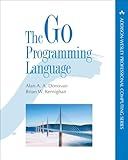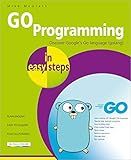Best Go Programming Books to Buy in November 2025

Learning Go: An Idiomatic Approach to Real-World Go Programming



Go Programming Language, The (Addison-Wesley Professional Computing Series)



100 Go Mistakes and How to Avoid Them



Mastering Go: Leverage Go's expertise for advanced utilities, empowering you to develop professional software



Network Programming with Go: Code Secure and Reliable Network Services from Scratch



GO Programming in easy steps: Learn coding with Google's Go language



Learn Concurrent Programming with Go


Pointers are a powerful feature in Go that allow you to directly manipulate memory addresses. They are used to store the memory address of a value rather than the value itself. To work with pointers in Go, you can follow these steps:
- Declaring a pointer: You can declare a pointer using the asterisk (*) symbol followed by the type of the value it points to. For example, var ptr *int declares a pointer variable ptr that points to an integer value.
- Creating a pointer: To create a pointer, you can use the address-of operator (&) followed by the variable whose address you want to store. For example, ptr = &myVar assigns the memory address of myVar to the pointer ptr.
- Accessing the value of a pointer: To access the value stored at a memory address referenced by a pointer, you can use the dereference operator (*) followed by the pointer variable. For example, fmt.Println(*ptr) prints the value stored at the memory address pointed to by ptr.
- Modifying the value using pointers: Pointers allow you to modify values indirectly by manipulating the memory address they reference. You can change the value indirectly by assigning a new value to the dereferenced pointer. For example, *ptr = 10 assigns the value 10 to the memory location referenced by ptr.
- Passing pointers to functions: Pointers are commonly used to pass values by reference to functions. When you pass a pointer to a function, any changes made to the value in the function will reflect in the original variable. To pass a pointer to a function, simply declare the function parameter type as a pointer. For example, func foo(ptr *int) defines a function foo that takes a pointer to an integer as a parameter.
- Returning pointers from functions: You can also return pointers from functions. However, you need to ensure that the memory being pointed to is not destroyed once the function finishes executing. Generally, this means allocating memory using the new keyword or by having the memory allocated outside the function scope. For example, func createPtr() *int defines a function createPtr that returns a pointer to an integer.
Note that Go manages memory automatically through its garbage collector, so you don't need to explicitly deallocate memory pointed to by a pointer.
Working with pointers in Go can be powerful, but it also requires caution as incorrect usage can lead to undefined behavior or segmentation faults. Only use pointers when necessary and ensure proper initialization and dereferencing to avoid errors.
What is the '&' operator used for in Go?
In Go, the & operator is used as the "address of" operator. It is used to obtain the memory address of a variable. This is often useful when working with pointers and passing variables by reference to functions. By using the & operator, you can pass the memory address of a variable to a function, allowing the function to modify the original value directly in memory.
What is the use of pointers in function parameters in Go?
In Go, pointers can be used as function parameters to achieve two main purposes:
- Passing an argument by reference: By passing a pointer to a function, you allow the function to modify the value of the original variable. Unlike passing by value, where a copy of the variable is made, passing by reference allows you to directly modify the original variable. This can be useful when you want to update a variable's value in a function and reflect those changes in the calling code.
- Avoiding unnecessary data copying: Go uses pass-by-value semantics, meaning that when you pass a value to a function, a copy of that value is created. For large data structures, this can be inefficient in terms of memory usage and performance. By passing a pointer to a function instead, you avoid making a copy of the entire data structure, which can lead to improved performance when dealing with large objects.
Here's an example to demonstrate the use of pointers in function parameters:
func main() { x := 5 double(&x) // Passing the address of x to double function fmt.Println(x) // Output: 10 }
func double(num *int) { *num *= 2 // Dereferencing the pointer to modify the original value }
In the above code, the double function takes a pointer to an integer as a parameter. By dereferencing the pointer using *num, the original value of x is modified within the function, and the updated value is reflected in the main function due to the pass-by-reference behavior of pointers.
How to work with pointers to slices in Go?
In Go, a pointer to a slice is usually not necessary, as slices are already reference types. However, there may be cases where you need to explicitly work with pointers to slices. Here's an example of how to work with pointers to slices in Go:
- Declare a pointer to a slice: Start by declaring a pointer variable that will hold the address of a slice. For example:
var ptr *[]int
- Create and assign a slice: Create a new slice and assign it to the pointer variable. This can be done using the make function or by initializing with values. For example:
nums := []int{1, 2, 3, 4} ptr = &nums
- Access the slice using the pointer: To access elements or perform operations on the slice, you need to dereference the pointer using the * operator. For example:
(*ptr)[0] = 10 // Modify a value in the slice length := len(*ptr) // Get the length of the slice
Note the parentheses (*ptr) used for dereferencing. This is necessary as the indexing operator [] has higher precedence than the dereferencing operator *.
- Modify the slice indirectly: Changes made to the specified slice using the pointer will be reflected in the original slice. For example:
*ptr = append(*ptr, 5) // Append an element to the slice
- Pass the pointer to functions: When passing a pointer to a slice to a function, use the * operator to pass the address of the slice. For example:
func modifySlice(s *[]int) { (*s)[0] = 100 // Modify the slice }
modifySlice(ptr) // Pass the pointer to the function
The above steps show the basic usage of pointers to slices in Go. However, it's important to note that using pointers to slices is not common in Go, as slices are already reference types and can be easily passed, modified, and returned without explicit pointer usage.
How to initialize a pointer variable in Go?
In Go, pointers are automatically initialized to nil. However, if you want to initialize a pointer variable to a specific value, you can use the new() function or the & operator.
- Using the new() function:
var ptr *int ptr = new(int) *ptr = 42
In this example, ptr is declared as a pointer to an integer, and the new() function allocates memory for an integer and returns its address. The *ptr = 42 assigns the value 42 to the memory location pointed to by ptr.
- Using the & operator:
num := 42 ptr := &num
Here, num is an integer variable, and &num returns its address. The address is assigned to ptr, which now points to the num variable.
Both methods will initialize a pointer variable to a valid memory address, allowing you to dereference the pointer and assign values to the memory location it points to.
How to create a new pointer to a struct in Go?
To create a new pointer to a struct in Go, you can use the new keyword or the & operator. Here's an example:
package main
import "fmt"
type Person struct { Name string Age int }
func main() { // Using new keyword p := new(Person) p.Name = "Alice" p.Age = 25 fmt.Println(p) // Output: &{Alice 25}
// Using & operator
q := &Person{"Bob", 30}
fmt.Println(q) // Output: &{Bob 30}
}
In the example above, the new(Person) expression creates a new pointer to a zero-initialized Person struct. You can then access and modify its fields using the dot operator p.Name = "Alice".
Alternatively, you can use the & operator to take the address of an already initialized struct literal. In this case, &Person{"Bob", 30} creates a new pointer to a Person struct with the specified field values.
How to declare a pointer variable in Go?
In Go, you declare a pointer variable by adding an asterisk (*) before the type you want to point to. Here's an example:
var ptr *int // declaring a pointer variable to an integer
In this example, ptr is a pointer variable that can store the memory address of an integer value. By default, the pointer variable will be assigned a nil value, indicating that it is not pointing to any valid memory location.
To assign a valid memory address to the pointer variable, you can use the & operator to get the address of a variable or value:
var num int = 42 ptr = &num // assigning the address of 'num' to 'ptr'
Now, ptr will hold the memory address of the num variable.
Keep in mind that Go also supports type inference, so you can use the := shorthand for declaring and initializing a pointer variable:
num := 42 ptr := &num
In this case, Go infers the type of ptr as *int based on the type of num.
